Not everyone knows that Naples boasts the highest number of churches in the world: we’re talking about an artistic and spiritual heritage of enormous importance, formed within seventeen centuries; this is the reason, since ‘700, it has been named the “city of 500 domes”. Early christian or gothic, baroque or neoclassical, the churches of Naples can mix contrasting and pluralist styles and traditions, bringing down the visitor both in a magical and almost pagan atmosphere and in a profoundly mystical and Christian experience. Whether you are a fervent believer or an enthusiastic appreciator of art, here is the list and the history of the 10 Neapolitan churches that you cannot miss on your tour.
Visit them all and make your journey to Naples more simple, convenient and comfortable with Naples Pass, that allows you to travel on public transport, skip boring lines and get discounts in many attractions.
The ten most beautiful churches in Naples between history and myth
10. Basilica of Madre del Buon Consiglio
The Basilica of the Uncrowned Mother of Good Counsel in Capodimonte is the youngest church in the city: it was built in the first half of the 20th century and consecrated only in 1960. It was made on a model of the Basilica of Saint Peter in Rome. The similarities with the Roman basilica are more evident both inside and out: the facade, the dome, the colors, the marble, the structure of the aisles (there is not even a more modest statue of piety); all of which are named after the “small St. Peter”. Inside is the Tamburini organ (the most renowned Italian organist) manufactured in 1964 and a positive Baroque organ built in 1769 by Domenico Antonio Rossi. Next to the basilica there is the entrance to the catacombs of San Gennaro from the 2nd century AD.
Not far there's also Capodimonte Museum, one of the most important museums in Naples and in Italy.
Opening hours: 8:30-18:30
Admission: free
How to get there: Metro Line 2 Cavour
9. Basilica of Santa Maria della Sanità
The Basilica of Santa Maria della Sanità was erected in 1600 on the site of the catacombs of San Gaudioso. It was dedicated to Santa Maria, but it is also known as San Vincenzo Sanctuary Church as it houses the statue of the Holy Spanish Dominican Vincenzo Ferreri, known as’ O Munacone. The church contains numerous testimonies of manieristic, classicist and baroque currents, and is famous for the majestic staircase leading to the apse where the sculpture of the “Madonna della Sanità” by Michelangelo Naccherino is placed; below the presbytery, the entrance to the early Christian basilica opens. It contains many works by Luca Giordano and Andrea Vaccaro.
Find it inthe heart of Rione Sanità, one of the most interesting districts, definitely to be visited.
Opening hours: 10:00 to 13:00
Admission: free
How to get there: Metro Line 1 Museo/ Metro Line 2 Cavour
8. Certosa of San Martino
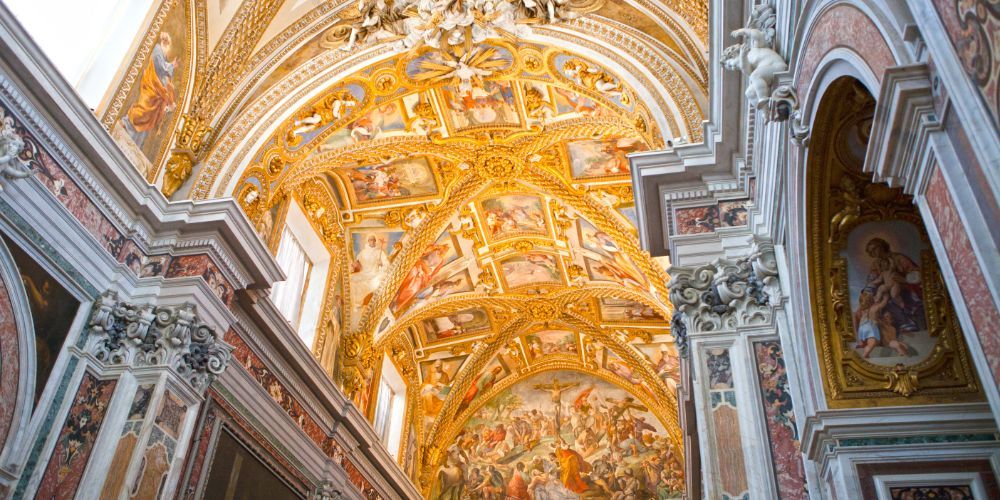
The Church of San Martino is located inside the Certosa homonymous, erected in 1325 by Carlo D’Angiò. The sovereign wanted it in a dominant position of the city, which is why it rises on the hill overlooking the whole Gulf of Naples. The complex has undergone remodeling and extensions in Baroque style, to the point that today the charter is one of the greatest examples of Neapolitan painting and sculpture of the sixteenth century. The church is made up of a single nave with eight side chapels, covered with precious marble tarsie. The vault, which retains the early 14th century structure, is redone by Giovanni Lanfranco in 1637 and depicts the Ascension of Christ in a glory of golden light . In the chorus, large canvases on the walls are commissioned to the greatest artists of the seventeenth century: Guido Reni , Massimo Stanzione, Jusepe de Ribera , Battistello Caracciolo. In the monumental sacristy, the precious walnut cabinets were made by Flemish and Neapolitan artists.
Opening hours: 9: 30-17: 00
Admission: € 6 / € 3 reduced
How to get there: Metro Line 1 Vanvitelli
7. Basilica of San Lorenzo Maggiore
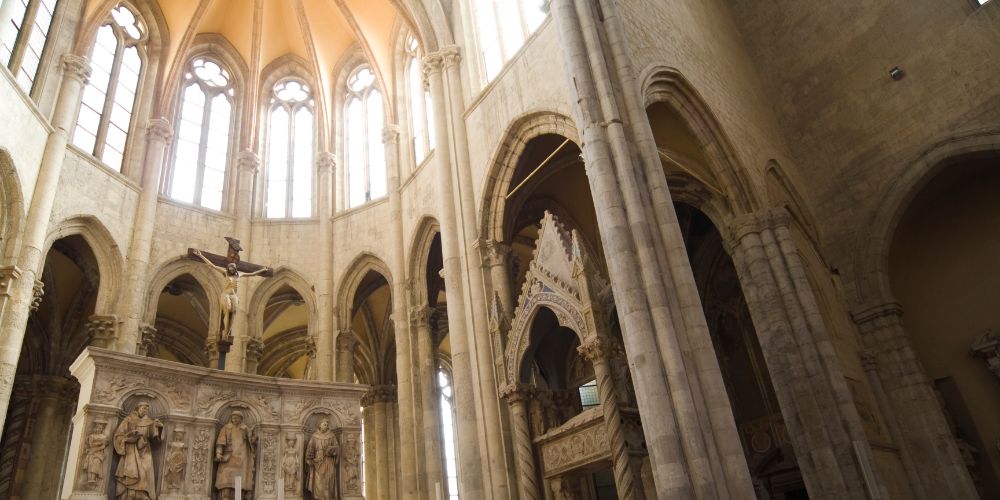
The Basilica of San Lorenzo Maggiore is located in Piazza San Gaetano, in the heart of the ancient city center where the extraordinary Naples undergrounds tour starts as well. It's an architectural jewel of inestimable importance, the result of the stratification of three different epochs: the greek one, the roman one and finally the medieval one. It was built in 1270, on the remains of an early Christian church from the 6th century AD, by the the monarch Carlo I D’Angiò, according to the unmistakable French Gothic style (visible in the spectacular circular apse ), mixed with the Franciscan one. It was in this basilica that the italian writer Giovanni Boccaccio met his beloved “Fiammetta” for the first time, exactly in 1334, during the mass of Holy Saturday took place.
Opening hours: 9:30-17:30
Admission: €9/€7 reduced
How to get there: Metro Line 1 Dante
6. Church of Sant’Eligio Maggiore
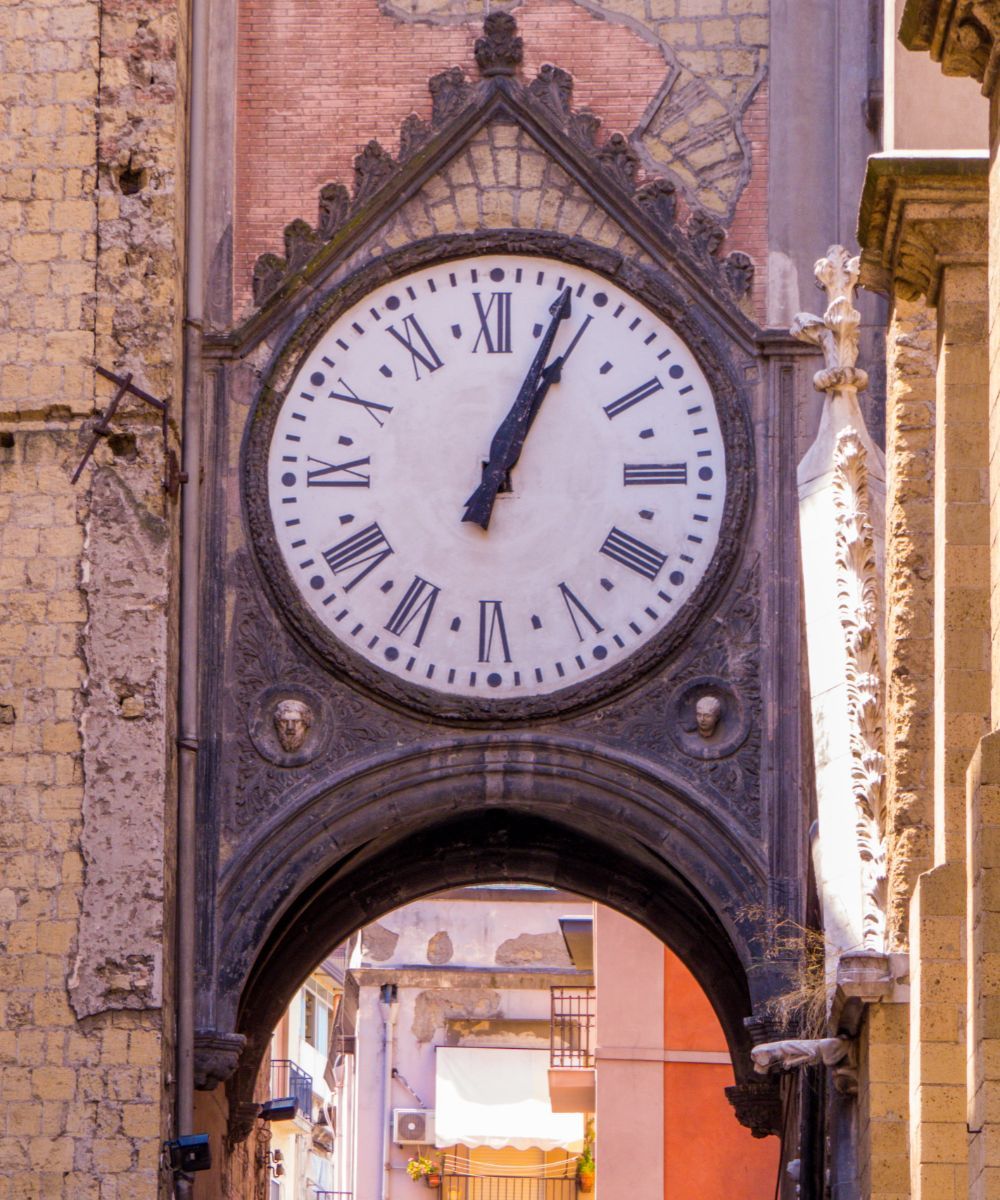
The Church of Sant’Eligio Maggiore, located near Piazza Mercato, is the oldest gothic church in the city. It was built by D’Angiò family in 1270 in honor of the saints Eligio, Dionisio and Martino. You can enter the complex sideways, from a stumped portal rich in naturalistic motifs of French Gothic style. The interior, in yellow tuft, is undoubtedly elegant and austere. There are, however, heavy remodeling of restorations following the Second World War, but there are still important works, such as the painting by Massimo Stanzione on the altar and representing the three saints and the “Universal Tribute” of the Flemish painter Cornelis Smet, whom somebody claims to be remodeled by Michelangelo. Of remarkable beauty is the ancient double-dial clock contained in the fifteenth-century double storey.
Opening hours: 8: 30-13: 00
Admission: free
How to get there: 15 minutes walk from Piazza Garibaldi
5. Church of Gesù Nuovo
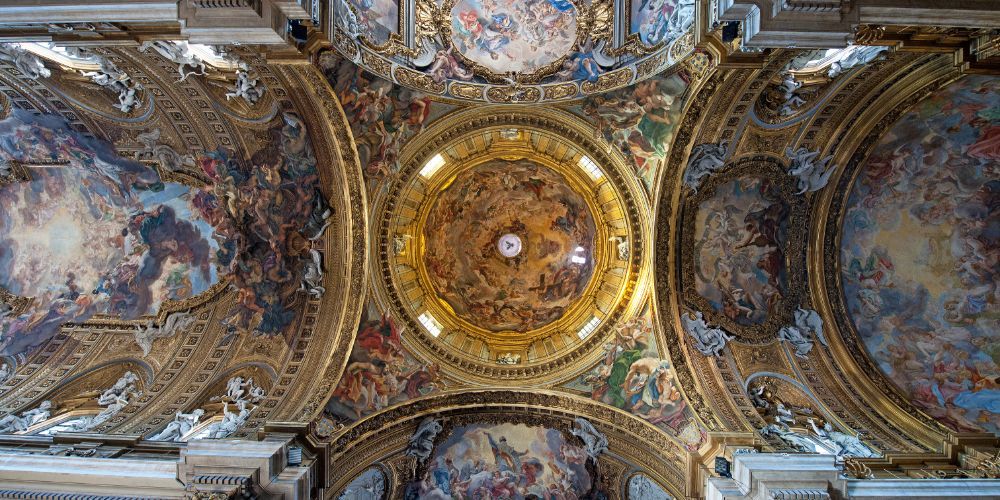
In the Gesù Nuovo Square , behind the facade of black stone of the Renaissance Palace Sanseverino , you can find the amazing Church of Gesù Nuovo. The Church was built by the Jesuits and inaugurated in 1597 ; it boats the highest concentrations of painting and baroque sculpture of the most influential artists of the neapolitan school . Among the rich marble decorations, frescoes and paintings, the interior features, among others, works by Ribera , Fanzago and Giordano ;
Opening hours: 07: 00-12: 30/16: 00-19: 45
Admission: free
How to get there: Metro Line 1 University, Dante / Metro Line 2 Cavour
4. Church of San Domenico Maggiore
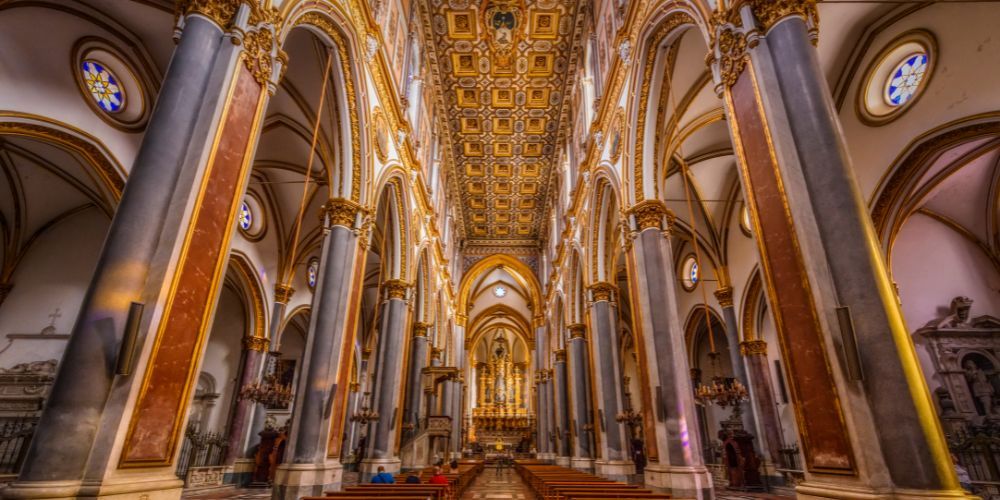
Located on the square of the same name in the heart of the old town, it was built by Carlo d’Angiò between 1283 and 1324 in Gothic forms , incorporating a pre-existing church from the 10th century BC. It is considered the most important place for the spread of dominican order in southern Italy and hada long tradition ofcollaboration with illustrious personalities, such as Tommaso D’Aquino , Giordano Bruno and Tommaso Campanella . Over the centuries, it has been restored several times, but the most important remake was operated by Vaccaro who transformed its original Gothic forms into Baroque . The church is full of works of art, in particular, the seventeenth-century major altar work of Fanzago and the canvases of Solimena and De Vivo .
Opening hours: 10:00-19:00
Admission: free
How to get there: Metro Line 1 University, Dante / Metro Line 2 Cavour
3. Church of San Gregorio Armeno
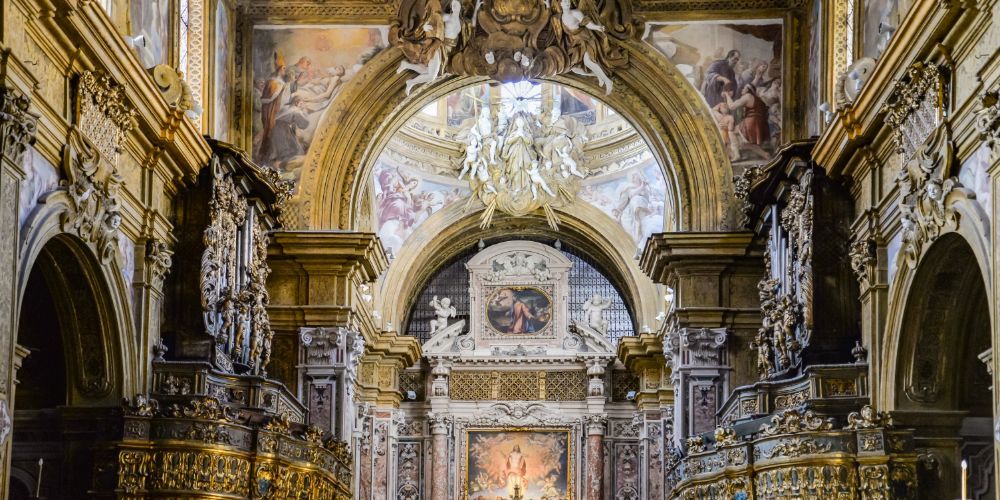
The Church of St.Gregory of Armenia, also known as the Church of Santa Patrizia, is a wonderful example of Neapolitan Baroque. The complex is situated above the ruins of a sanctuary dedicated to goddess Cerere. It was founded in the eighth century by the nuns of San Basilio fleeing the East with part of the relics of St. Gregory, patriarch of Armenia. Inside the building was also brought to the nineteenth century the body of Saint Patrick, considered a descendant of Emperor Constantine. With the passing of time in Naples, the worship of the Holy One became almost stronger than that of the Saint. Along with the well-known miracle of St. Gennaro, that of Santa Patrizia also sees the blood liquefaction of the saint, every tuesday and every August 25, on a day when she is celebrated.
The street of the same name, Via San Gregorio Armeno, is also known for being the heart of the art of the Neapolitan nativity scene, with the artisans' workshops open and active all year round.
Opening hours: 9:30-12:00
Admission: free
How to get there: Metro Line 1 University, Dante / Metro Line 2 Cavou
2. Basilica of Santa Chiara
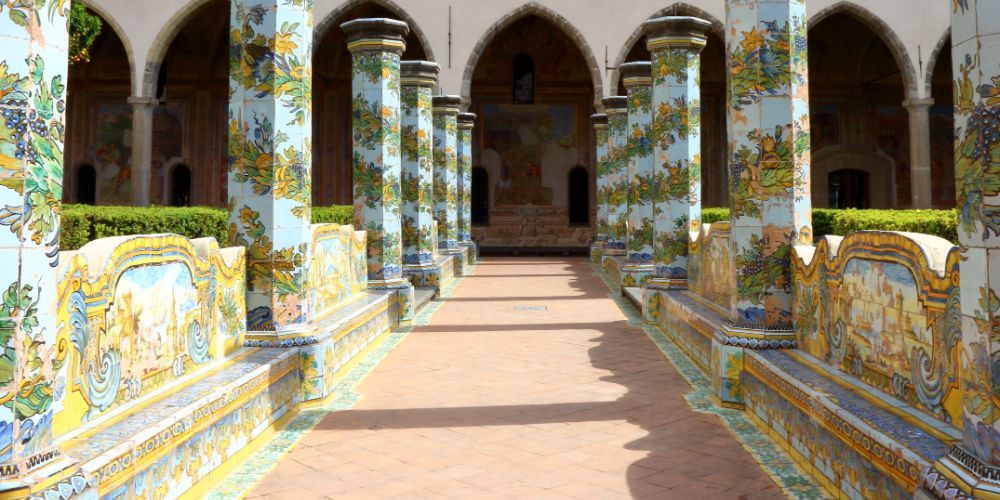
The monumental complex of Santa Chiara was built from 1310 to 1340 by the monarch Roberto D’Angiò and located in the heart of the historic center of Naples. The original Gothic plant followed a Baroque renovation in the 17th century, until it was almost completely destroyed by the bombings of the alliesduring the Second World War. Then the basilica was restored in its original Gothic form. The interior strikes for its vastness and simplicity; inside the building you could also find the tomb of King Roberto and the tomb of the national italian hero Salvo d’Acquisto. More over in the Basilica you could visit a pricelesstreasure: the cloister of the Clarisse, designed by Domenico Antonio Vaccar o and decorated with eighteenth century majolica by Giuseppe and Donato Massa.
Opening hours: 7: 30-12: 30/16: 00-19: 45
Admission: free
How to get there: Metro Line 1 University, Dante / Metro Line 2 Cavour
1. Naples Cathedral
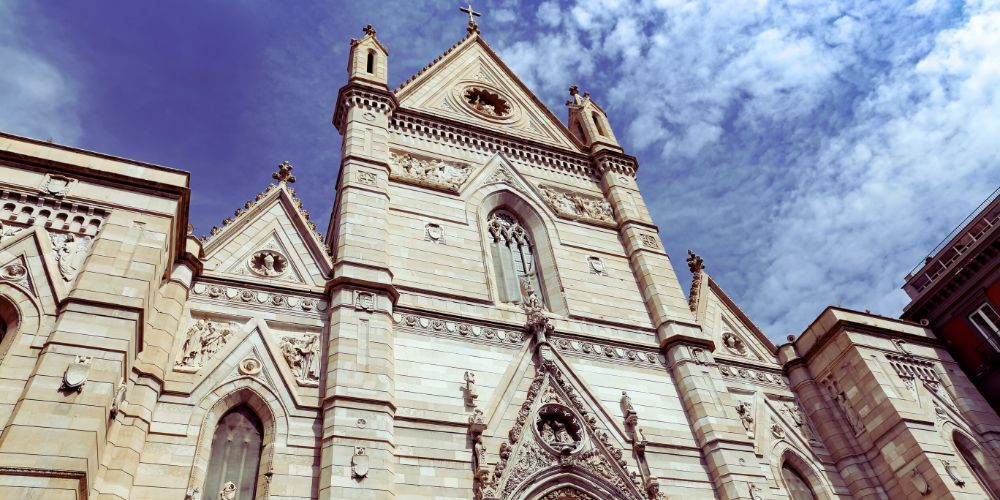
Opening hours: 8:30-12:30/16:30-19:00
Admission: free
How to get there: Metro Line 1 University / Metro Line 2 Cavour
How many churches are there in Naples?
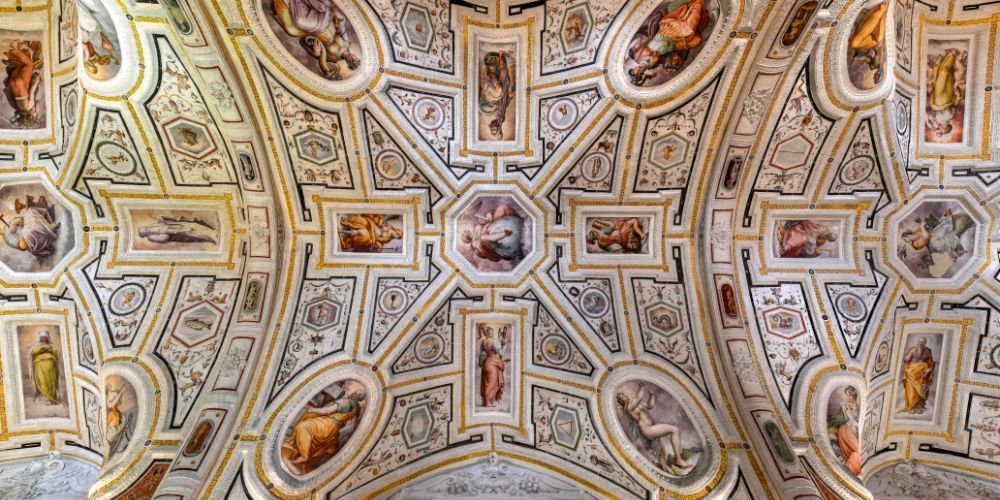
The “1000 churches of Naples” may seem like a figure of speech, but if there are 500 domes in Naples, the total number of churches is really a thousand. In fact, since 313 AD, beautiful churches have always been built in Naples which today constitute an artistic and historical heritage of immense value. The oldest church in Naples? The primacy is attributed to the basilica of Santa Restituta, from the early Christian era, which today is incorporated inside the Cathedral. It was built in the 7th century AD. on the remains of a temple of Apollo.
Furthermore, in addition to the churches already mentioned, there are many others not to be missed. To name just one, the church of Sant'Anna dei Lombardi is certainly worth a visit thanks to an extraordinary cycle of frescoes by Vasari, Rossellino and other artists which constitutes a wonderful and original expression of the Tuscan Renaissance in Naples.
Caravaggio in Naples' churches
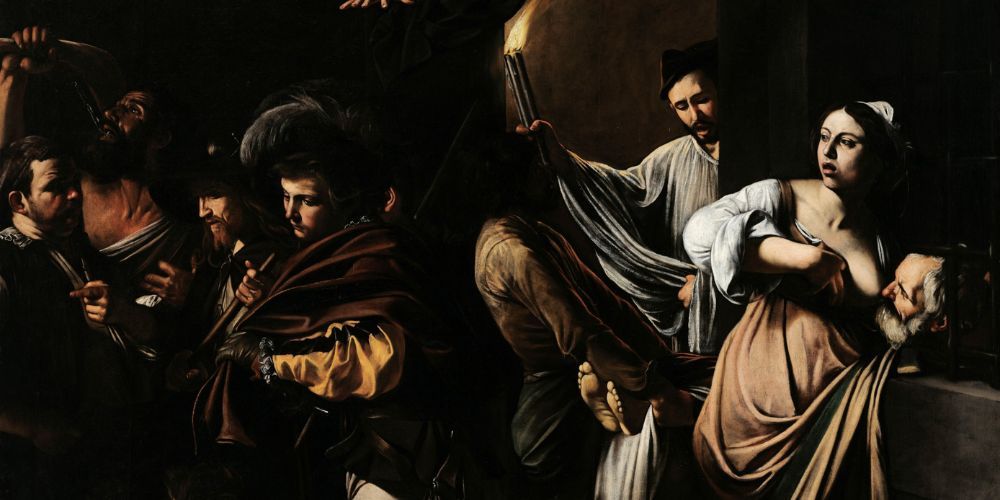








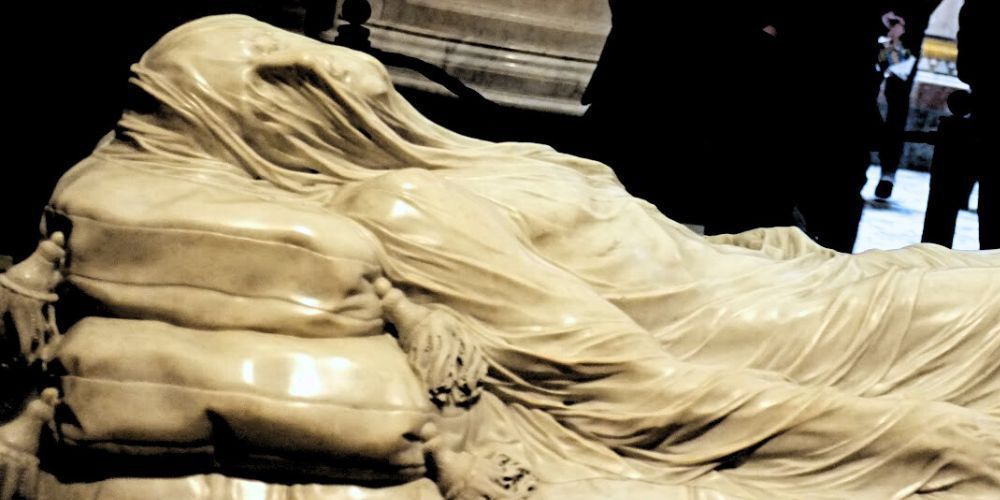
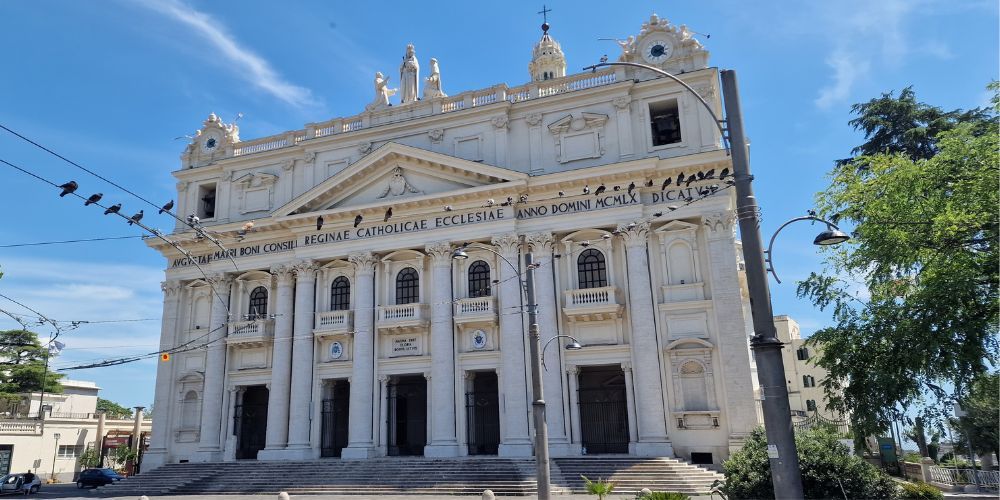
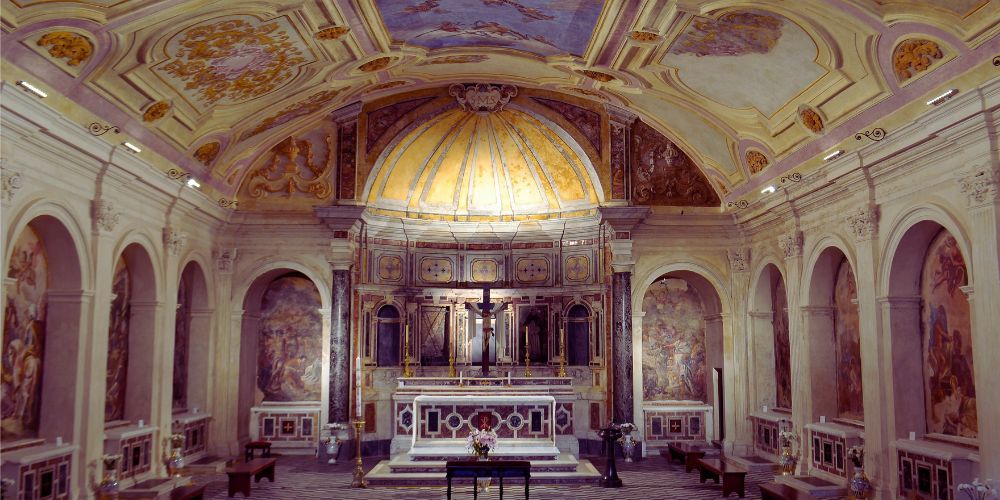


Lascia un commento